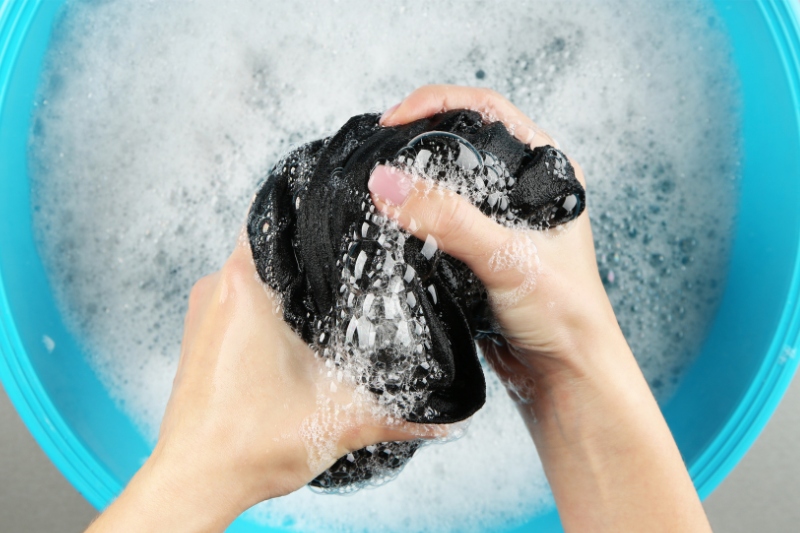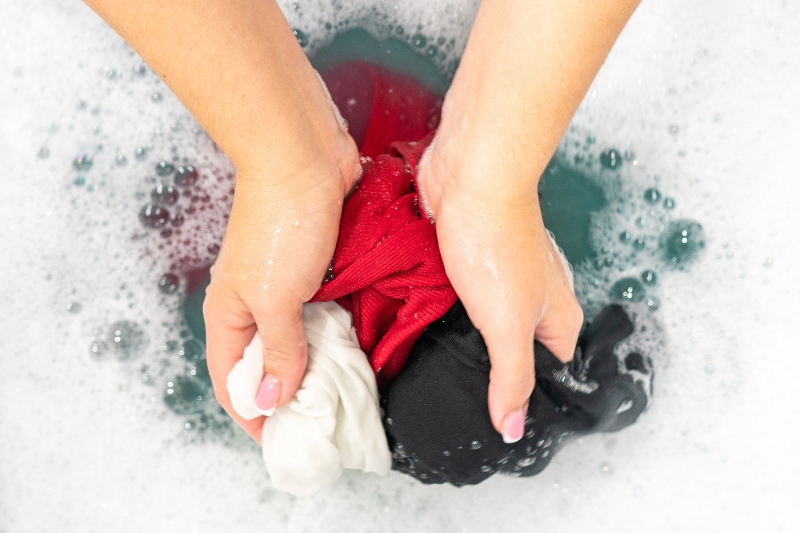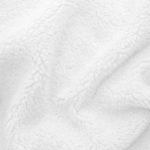In this day and age, the most common way of doing laundry is by using a washing machine. Even if you don’t own one yourself, there are plenty of laundrettes around that you can take your washing to instead.
The convenience of throwing all your laundry into a washing machine and letting it do all the work is unmatched.
But unfortunately, there are a number of fabrics that cannot be machine washed without the risk of becoming damaged.
Although most washing machines now offer a delicate or hand-wash cycle function, washing these flimsy fabrics by hand is still the safest way to guarantee your clothes will continue to look their best. Even these gentle cycles can cause unwanted colour loss and shrinkage.
In order to properly look after your clothes, you need to know which fabrics should be hand-washed. Thankfully, we have all the information you need!
Which Fabrics Need to Be Hand-Washed?

When it comes to laundering, it is always best to hand-wash fabrics that are considered delicate. The harshness of a washing machine cycle means that these kinds of materials are prone to bleeding, shrinkage, and misshapenness. The main fabrics to watch out for are:
- Wool
- Viscose
- Chiffon
- Silk
- Satin
- Lace
Hand-washing bras and other delicate lingerie is also recommended by most leading brands, no matter what material they are made of. Bras are particularly prone to damage in the machine, as it is common for the underwire to poke through the surrounding fabric.
What’s the Hand-Washing Symbol on Clothing Labels?

Although the above list provides a good guideline to which fabrics you should hand-wash, the easiest and safest way to check whether a certain fabric can be machine washed is by looking at the care label instructions on each specific garment.
If an item is hand-wash only, it will be clearly indicated on this label using the symbol of a bucket with a hand in it.
Although you can simply go by the list above, there are many cases when a garment appears to be made of one material but is actually made of another. Checking the care label ensures that you don’t make any wrong assumptions when it comes to your clothing material.
When checking your care labels, bear in mind that “dry clean only” and “hand-wash” are not synonymous with each other. However, care labels do have the tendency to be overcautious, so you could try hand-washing your “dry clean only” items if you’re willing to take the risk.
How Do You Wash Clothes By Hand?

Having grown up with a washing machine, most people find the thought of hand-washing their clothes quite daunting.
Rinsing your swimwear or a nasty stain under the tap is one thing, but giving your garment a thorough clean is something else entirely. Thankfully, hand-washing your clothes is actually much easier than you would think!
Although old-fashioned scrubbing boards often come to mind when thinking of hand-washing, you can clean your clothes with three simple things: water, a sink or tub, and laundry detergent.
Once you have these three items to hand, simply follow the below instructions:
- Fill your sink or tub with lukewarm water.
- Add laundry detergent to your water according to the label instructions.
- Stir the detergent into the water to ensure it has dissolved.
- Fully submerge your garment(s) in the soapy water.
- Agitate the water and gently massage the clothing, taking care not to scrub or twist at the fabric as this can cause unwanted damage to the fibres.
- Remove the clothing from the tub and rinse it under cold water until all traces of detergent have been removed.
- Press the garment(s) between two towels to remove excess water.
- Leave to air dry.

Hannah has a passion for cleaning. She worked her way around Australia by cleaning hostels in exchange for free accommodation and used her cleaning skills to bag a job as a chalet host for a luxury ski company in France.






